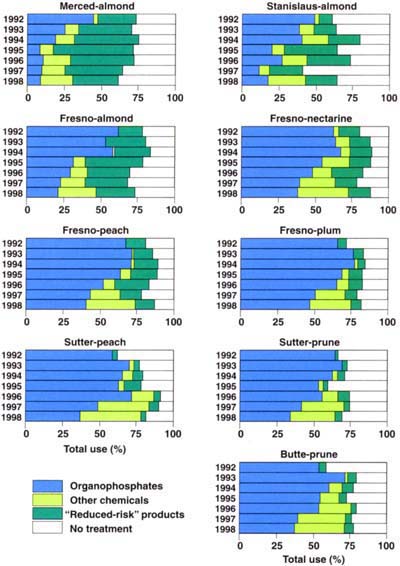All Issues
Science briefs
Publication Information
California Agriculture 55(1):5-5.
Published January 01, 2001
PDF | Citation | Permissions
Full text
Scientists try to slow GWSS
Last August, UC scientists and the California Department of Food and Agriculture (CDFA) released a tiny, stingerless parasitic wasp in Riverside, Ventura, Kern, Tulare and Fresno counties. The wasp is being tested to control glassy-winged sharpshooter (GWSS), which is a vector of a bacterial pathogen that threatens several of California's crops, including citrus, grapes, stone fruits and almonds. So far scientists have not recovered the mymarid wasp Gonatocerus trigutattus at any of the release sites.
“Monitoring hasn't turned up anything, so we suspect there was no survival,” says IPM advisor Phil Phillips. “We'll be more certain this late spring after first generation eggs have been laid. A definite conclusion will be reached late this summer after the second generation eggs have been laid and native wasp activity is at its peak.”
Unfortunately, the wasps weren't released until the end of August when most of the GWSS egg masses at the release sites had either already hatched or had been parasitized by local Gonatocerus species, primarily G. ashmeadi.
The introduced wasp is intended to complement the native parasitoids. It is more effective during the spring, when our native parasitoids are least effective, Phillips explains.
Phillips and Serguei Triapitsyn, UC River-side principal museum scientist, traveled to Mexico in 1999 seeking GWSS natural enemies and discovered the mymarid wasp G. trigutattus.
Although biological control will slow the spread of disease, the ultimate solution will be to control the bacterium, Phillips says.
A major reason the agricultural industry is anxious to control GWSS is that it spreads the bacterium that causes Pierce' disease, and can fly farther than other sharpshooters. More than 1,000 acres of premium wine grapevines in the North Coast and another 300 acres in Riverside County have been killed by the disease. So far these North Coast losses have been due to native sharpshooter vectors in the absence of the more threatening introduced GWSS species.
UC's Division of Agriculture and Natural Resources has published the first comprehensive field guide, Pierce's Disease. It contains 25 color photographs of the disease's symptoms and GWSS, and gives tips for managing vineyards.
Pierce's Disease (Publication 21600) costs $6 and can be ordered by phone, (800) 994-8849 or (510) 642-2431; fax, (510) 643-5470; or Internet http://anrcatalog.ucdavis.edu/.
Fig. 3. Relative amounts of planted area in almond and stone fruit orchards that were treated during the dormant season or at bloom, for counties with largest planted areas. “Other chemicals” are nearly all pyrethroids, but also include carbamates and endosulfan. “Reduced-risk” products include Bacillus thuringlensis, spinosad and dormant oil without another insecticide.





